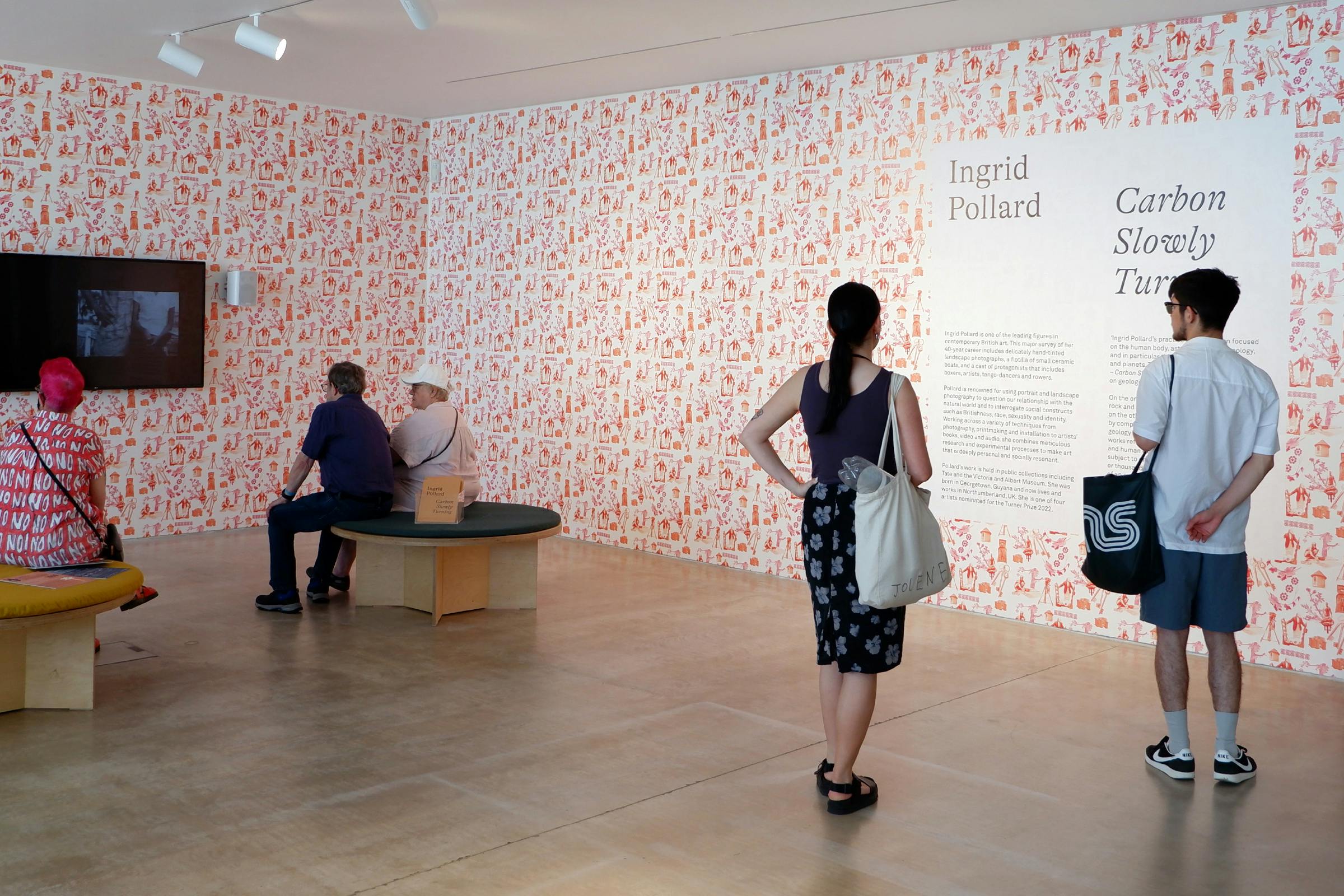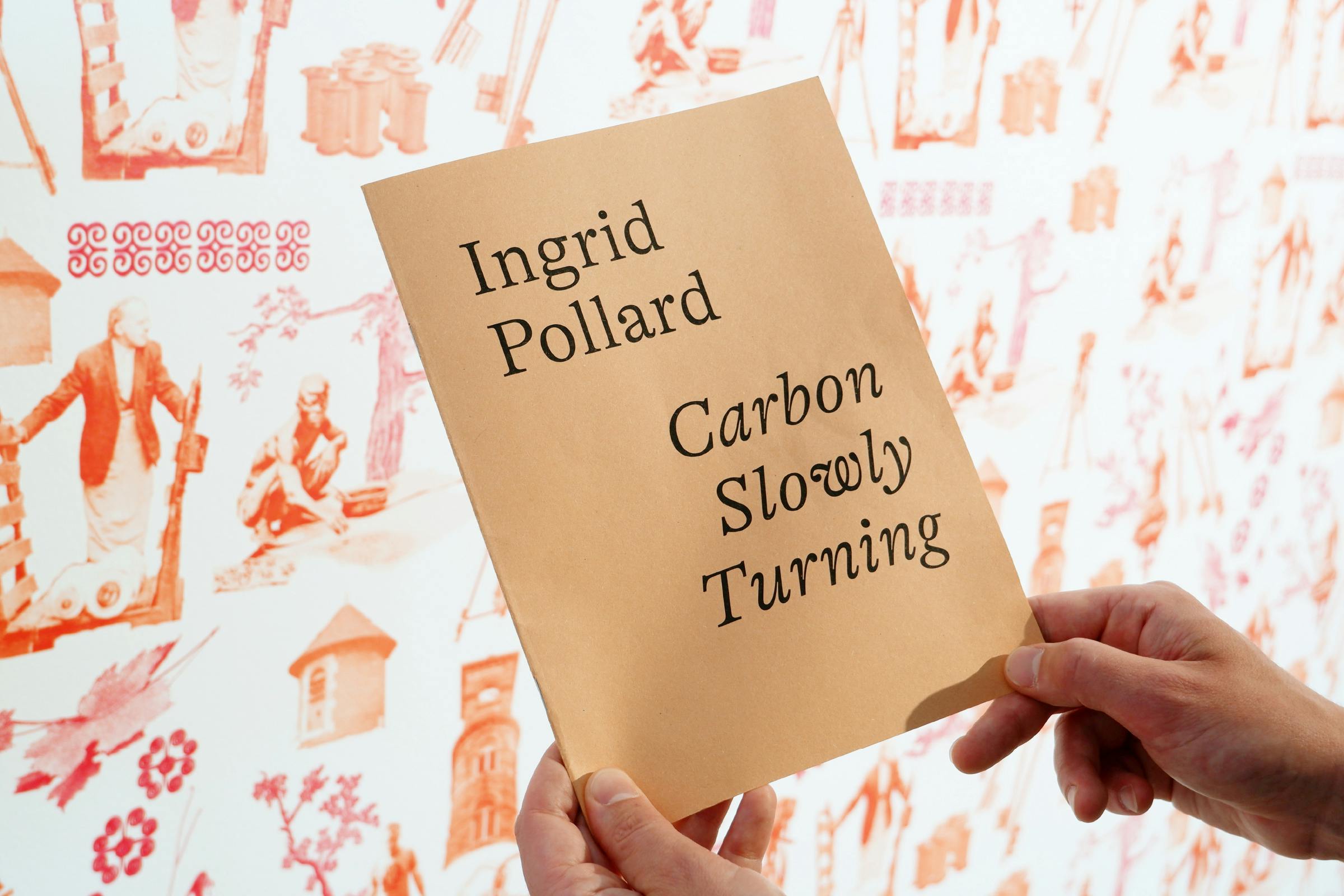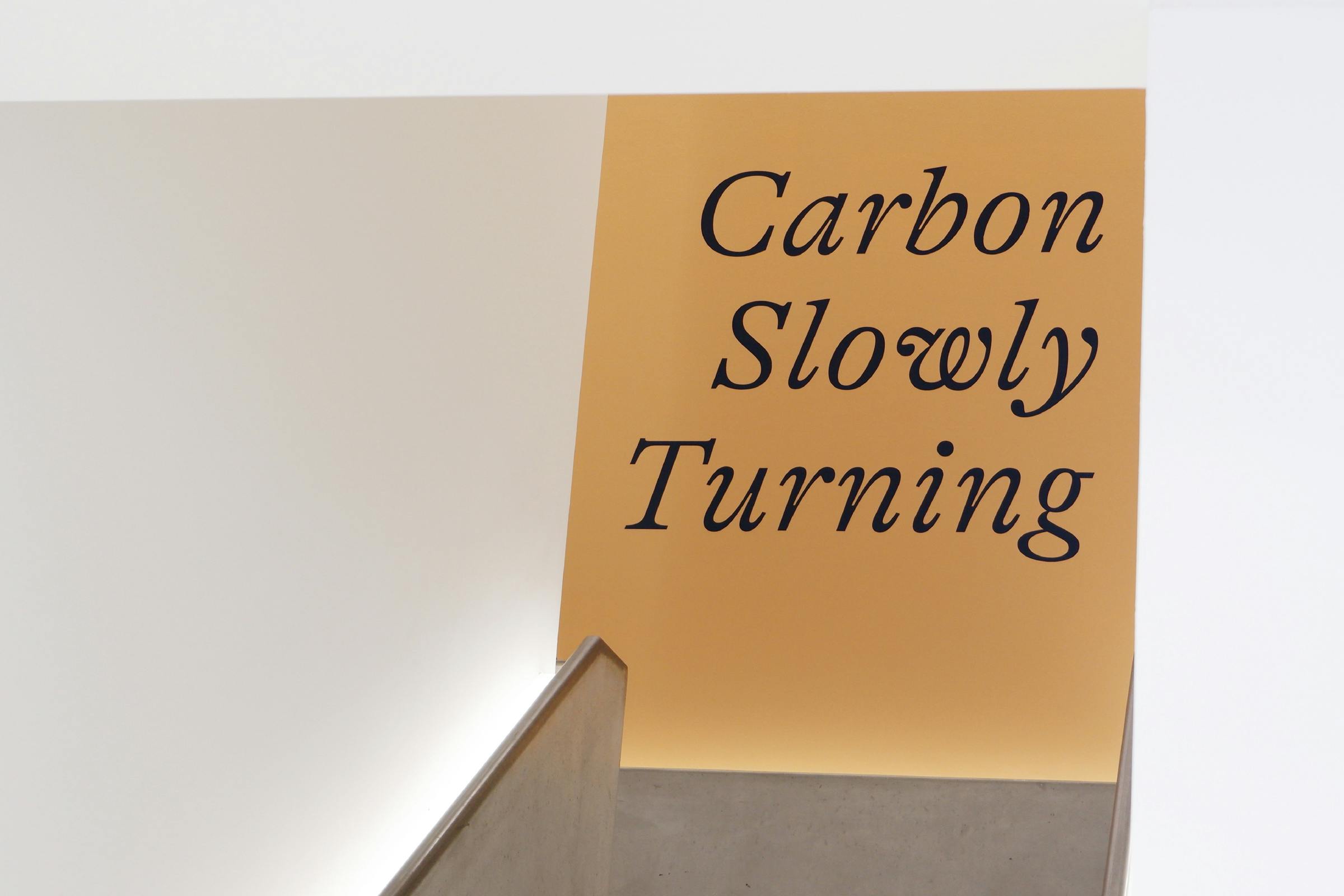
Ingrid Pollard: Carbon Slowly Turning
The first major mid-career survey of Turner Prize nominated artist, Ingrid Pollard, exploring her experimental works from the 1980’s to the present day, and her substantial contribution to British art.
Pollard’s work explores how images and identity are constructed, especially in representations of history and the landscape, working with film, photography, installation and sound. Interrogating British identity, race and sexuality.
Graphic intervention is minimal within the galleries. A large-scale title text sits on a faded-orange wall as you walk up the stairway to the exhibition introduction on the first floor.
The exhibition introduction is printed onto four tiled sheets of semi-transparent paper, overlayed above There Was Much Interruption (2015), a Toile de Jouy wallpaper.* This work that was conceived during Pollard’s residencies at Château de Sacy, Picardy, northern France, and at the In-Situ artists’ project in Brierfield, the site of a former cotton mill in Lancashire. Both locations, the mill and the rural setting, recall the hierarchical nature of labour and land ownership.
An extensive gallery guide accompanies the exhibition, setting out quotations and captions for each room. Printed on newsprint and bound with a recycled faded-orange cover, that references work found in the exhibition.
The title of the exhibition is set in GT Alpina, a serif typeface with a strong flourish. The quotes are set in American Typewriter, a typeface that Pollard uses throughout her work. Caption texts are set in Akkurat, the Turner Contemporary house typeface.
Typefaces
GT Alpina, American Typewriter, Akkurat
A poster campaign interplays typography and bold imagery to create a shifting composition of graphic and photographic form.
* Traditionally, this kind of wallpaper depicts idealised vignettes of rural life and the leisure pursuits of landowners in stark contrast to the reality of those toiling and working on the land. The work instead incorporates a historic imagery of a textile printer in Kumasi, Ghana, referencing Kumasi’s central importance to the history of West African printed textiles, representing another aspect of cotton production.

